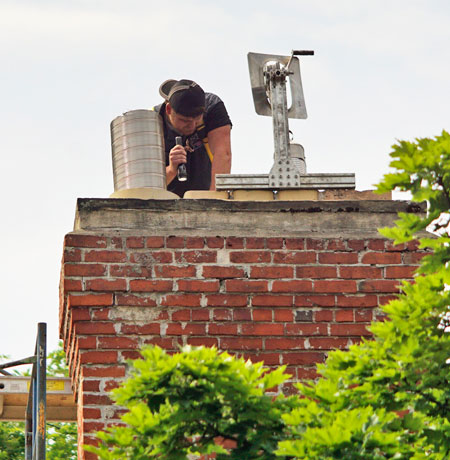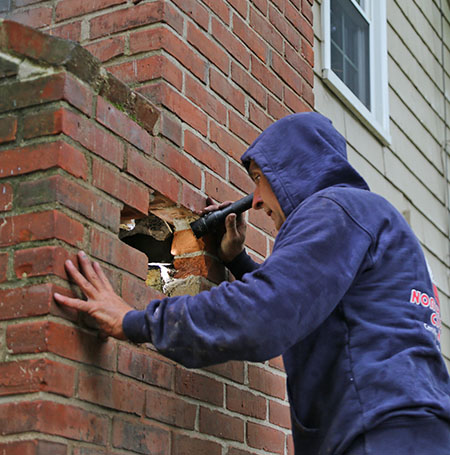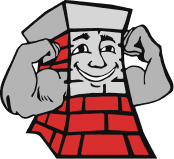How to Keep Your Fireplace & Chimney Safe All Year Long
Fireplaces and chimneys are like the proverbial “two-edged sword”: they can be extremely dangerous, and they can be completely safe. Of course, you want the completely safe kind, so here are some ways to accomplish that.
What kinds of dangers can a fireplace or chimney create?
There are four main safety concerns with these structures:

- Chimney/house fire
- Collapsed chimney
- Water damage that leads to damage of home building materials
- Drafting issues that send deadly toxins into the house
Let’s look at each one and how to prevent it.
Chimney or house fire
A primary cause of chimney fires each year in the United States is creosote buildup in the flue. Creosote forms when wood burns.
It is highly flammable in any of its forms: sticky, puffy or solid. Annual chimney sweep service from a certified chimney professional is the best way to keep creosote at a minimum and also to check the chimney for other problems during a chimney inspection.
Chimney sweeps use a variety of specialized tools and equipment to clean your chimney. Chimney cleaning is not a job for a novice without certification from the Chimney Safety Institute of America and the necessary years of hands-on experience.
Major chimney structural damage
Over time, the bricks and mortar that make up a chimney can begin to fail. Early signs include small cracks and crumbling. If left unattended, water will get into these breaches and start a cycle of decay and destruction. Severe masonry damage can cause a chimney to begin to lean to one side and eventually collapse. Various processes that can prevent this include masonry waterproofing, crack repair, tuckpointing to replace missing sections of masonry and full or partial chimney rebuilding.
 Water damage
Water damage
Water from rain and melting snow is the enemy of chimneys, fireplaces and their components. We saw how water can destroy the bricks of a chimney, but it also can seriously damage various components including the chimney liner, chimney cap, chimney crown and fireplace damper. Water will eventually rust metal parts and cause decay to other materials. Of particular concern is a chimney leak that allows water to spread to vulnerable materials of the home such as wall boards, ceilings, insulation and beams near the chimney/fireplace.
The first signs of leaks should be addressed right away. A certified inspection is called for when unseen damage is suspected.
Flue obstructions & drafting issues
Chimney flues can become obstructed two ways: excess buildup of creosote, and outside debris that has gotten into the flue. We talked about creosote earlier, so let’s focus on drafting problems due to obstructions. If your chimney has no chimney cap or has one that’s damaged, all manner of obstructions can enter the flue. These include leaves, twigs and other falling tree debris as well as small animals that build nests inside chimneys. Obstructions will hamper the drafting of smoke, which carries with it deadly carbon monoxide. Keeping these toxins out of your home is accomplished with annual chimney sweep and chimney inspection services.
As you can see, chimneys can be safe or dangerous. Northeastern Chimney of West Hartford, CT, prefers safe chimneys, and that’s why we offer certified chimney cleaning, inspection, repair and rebuilding services. Get more information or schedule an appointment by calling (860) 233-5770.


